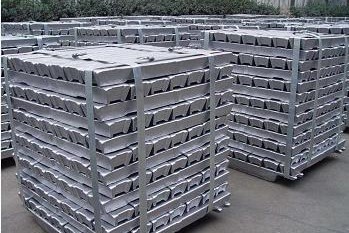The role of rare earth in ductile iron



Magnesium, rare earth and calcium all have the effect of spheroidizing graphite in cast iron. In terms of comprehensive evaluation of their effects, magnesium is the first. However, under the condition that magnesium is used as the main spheroidizing element, if appropriate rare earths are used, it can complement each other and achieve better spheroidizing effects.
1. Desulfurization and deoxidation Magnesium, calcium and rare earth have strong desulfurization and deoxidation effects in molten iron. In terms of the free energy of the element's interaction with sulfur and oxygen and the formation of sulfides and oxides, rare earth (cerium) and calcium are more capable of desulfurization and deoxidation than magnesium. However, the boiling point of magnesium is 1107°C, and it vaporizes quickly after entering the molten iron, which has a strong stirring effect on the molten iron. At the same time, the gas dissolved in the molten iron is easy to diffuse and precipitate into the bubbles, and then be carried out by the bubbles. The oxide and sulfide inclusions in the molten iron are also easily absorbed and discharged by the bubbles. If the factors of reaction kinetics are considered, the deoxidation and desulfurization effect of magnesium in molten iron is actually stronger than that of rare earth (cerium) and calcium.
2. The effect of suppressing interference elements In ductile iron, some elements play the role of de-spheroidization, which are usually called interference elements. Interference elements can be roughly divided into two categories:
One type, some people call consumable interference elements, such as sulfur, oxygen, etc., are easy to form compounds with various spheroidizing elements that are currently widely used. Magnesium, rare earth, and calcium can all desulfurize and deoxidize, and eliminate their negative effects. Of course, they themselves have to consume part of them. Using magnesium as a spheroidizing agent, magnesium oxide MgO has a high melting point, good stability, and low solubility in molten iron, but with a slightly larger particle size, it may float to the surface and become scum, or it may be caught inside the casting and become a pinch. Scum. At the same time, magnesium sulfide (MgS) has a low density and is easy to float to the surface of molten iron, but its stability is poor. Magnesium oxide is formed after contact with oxygen, which releases sulfur back to the molten iron and reacts with the magnesium in the molten iron again. The continuous occurrence of this reaction is one of the main reasons why the spheroidization is prone to decline when magnesium is used as a spheroidizing agent. Rare earth is used as a spheroidizing agent, the decline phenomenon is not so obvious, and the tendency to form slag inclusions is also small. When magnesium and rare earth are used as a spheroidizing agent, the stability of rare earth sulfides and oxides is very high, the particle size is fine, and it is difficult to float in molten iron, and the mismatch between these compounds and the graphite lattice is very small, which can be used as graphite precipitation Heterogeneous core, so both have the function of gestation.
The other is the segregation type despheroidizing elements, such as bismuth, lead, antimony, titanium, tin, arsenic, aluminum, etc., which are concentrated in the eutectic clusters when the cast iron undergoes eutectic transformation, which distorts the shape of graphite. Magnesium has a poor ability to resist interference elements, while rare earth elements have a strong ability to inhibit the harmful effects of such interference elements. When the residual cerium content in cast iron is 0.008%, it can effectively inhibit the despheroidization of interference elements. Therefore, the main purpose of using rare earths in magnesium-based spheroidizing agents is to suppress the harmful effects of interfering elements.
3. The effect on the white mouth tendency of cast iron is the rare earth soluble in molten iron on both sides. It has a strong effect of promoting the formation of carbides. It is an antigraphitizing element. However, a small amount is added to the magnesium-based spheroidizing agent. The rare earth, because of its role of enhancing inoculation, it can greatly reduce the white mouth tendency of cast iron.
However, if the amount of residual rare earth in the molten iron is too much, it has the effect of enhancing the tendency of cast iron to white mouth. This seemingly contradictory phenomenon is actually not contradictory. The reason is that rare earths have a strong ability to combine with sulfur and oxygen. A small amount of rare earths will quickly react with the sulfur and oxygen in the molten iron to form a large number of small particles. Sulfides and oxides provide a large number of heterogeneous crystal nuclei for the graphitization of cast iron, which greatly increases the number of graphite balls, which facilitates the diffusion of carbon in the iron to the graphite balls, thereby inhibiting the formation of white mouths. If the amount of rare earth added is large, in addition to the role of oxygen and sulfur, there will be excess soluble in molten iron. Of course, the residual rare earth in this part will enhance the white mouth tendency of cast iron.

